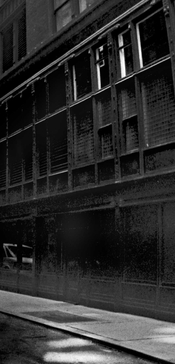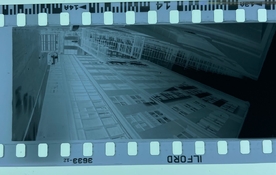-
Welcome to Photrio!Registration is fast and free. Join today to unlock search, see fewer ads, and access all forum features.Click here to sign up
You are using an out of date browser. It may not display this or other websites correctly.
You should upgrade or use an alternative browser.
You should upgrade or use an alternative browser.
Blotchy shadows on scans
-
H
- Thread starter Citsmith
- Start date
Recent Classifieds
-
For Sale Cambo Wide 650 + 900 / Reflex
- Started by RoboRepublic
-
Sold 2x 4x5 Grafmatics + 12 septums
- Started by RoboRepublic
-
For Sale Several medium format cameras
- Started by campy51
-
For Sale 3 x Jules Richard Taxiphote _ French cabinet stereoscopic viewers
- Started by Manual Camera
-
For Sale FS: Tomiyama Art Panorama 170 Roll Film Holder & Viewer
- Started by B.S.Kumar
Forum statistics
runswithsizzers
Subscriber
Is it a black and white negative?
Are you using a film scanner with some kind of ICE/dust removal enabled?
Are you using a film scanner with some kind of ICE/dust removal enabled?
runswithsizzers
Subscriber
Yes, some kinds of dust removal tools do not work on b&w negatives, which is why I asked. [Edit: When I say ICE "doesn't work" with b&w, what I mean is, it can cause artifacts similar to your example.] I don't know if some kind of IR dust removal is available on the Epson V500, but if it is, then check to be sure it is disabled when scanning silver-based b&w negatives.It is an Epson V500. I don’t believe ICE works on black and white negatives. I don’t remember any other dust removal.
Thanks for the comment.
If we can rule out artifacts produced by the scanner being set to IR, then the splotchy look may be due to other scanner settings. Sometimes, when shadow details are very faint, some scanners have trouble telling the difference between a faint detail and no detail (signal to noise ratio). Some scanner+software combinations allow multiple scans which can help average out the noise a little.
Trying to boost the shadows too much can introduce artifacts, and some sharpening routines can emphasize those artifacts.
It might be instructive if we could see a photo of the negative on a light source to better judge the potential of the negative for scanning. But if you have made a better scan of this same negative using the same scanner, then problem is more likely due to some change in how the negative was converted to positive and your post-processing actions.
What software are you using to convert the negative to positive? One other option you might try would be to scan the negative as a positive, and then use some other software to convert it to positive, possibly with more control over the final result?
Last edited:
Taylor K Nankervis
Member
It is an Epson V500. I don’t believe ICE works on black and white negatives. I don’t remember any other dust removal.
Thanks for the comment.
Epson's ICE feature, which is used on pretty much anything on the platten, needs to be used very carefully as it can potentially ruin an image where otherwise it would be fine with very selective de-specking/*-dusting, ideally in Photoshop or Lightroom — it is a very easy task to learn. I would recommend bypassing ICE in favour of skill building manual de-specking and control of shadows (and highlights). With automation, you are not being shown how changes are being made, by how much, and how the effect can be interpreted (but in the sample shown, it is excessive).
What causes this blotchy closed up look on a scan. This is a small section of a larger scan. I have gotten a much better scan from the same negative recently on the same scanner.
Low resolution combined with a thin negative? Make sure any adjustments are set back to default. Ideally in a scan don't try to go for the final image, a flat scan without highlight and shadow clipping is perfect for final adjustments to a normal contrast range in Lightroom or Photoshop, and far easier than trying to nail shadows and highlights in scanner software.
What causes this blotchy closed up look on a scan.
Trying to scan an underexposed/thin part of the negative does this, specifically if the black point is set a little too high during scanning, causing some of the tones to be smashed together in pure black.
This is the solution:
a flat scan without highlight and shadow clipping is perfect
Try this:It is an Epson V500.
Works with B&W, too; you simply only have a single 'color' channel to work with (ignore the color channels, just invert the overall curve).
Alternatively, if you prefer to scan as a B&W negative in Epson scan so you get an inverted/positive image output directly: after doing a pre-scan and selecting the negative area to be scanned, go into the Histogram adjustment dialog:
Then set the black and the white points in such a way that you keep them left/right of the actual image data by a small margin:
The reason you have to keep a small margin is because the Histogram tool in Epson scan isn't 100% reliable; in reality it can still lop off some image data even if you think you steered of the toe and the shoulder parts of the image.
If you scan at 16 bit color depth, you will have plenty of nuance to do your contrast adjustments.
Of course, part of the solution is also to ensure proper exposure in the first place; the area of the negative you showed us is most likely significantly underexposed in the original negative.
ICE is not the problem here.
runswithsizzers
Subscriber
I think the problem is less due to how the scanner recorded the data, and more due to what the software did to the data afterward?The original negative has got a wide range and the original scan did not pick up the shadows well.
Thanks for all the suggestions.
Of course, the software did only what it was told to do -- either by some preprogrammed algorithm or by your manual input.
---
If it's a 36 exposure roll, then this frame is from the middle of the roll. Seems like light leaks in the cassette or while processing would more likely be at the ends of the roll? So I'm guessing, maybe a light leak that happened in the camera?There appears to be a large are of fogging in the lower left corner of the negative. It doesn't help, that's for sure!
View attachment 383704
@Citsmith, do any other frames show a similar patch of fog?
Good point to add a bit in the histogram.Trying to scan an underexposed/thin part of the negative does this, specifically if the black point is set a little too high during scanning, causing some of the tones to be smashed together in pure black.
This is the solution:
Try this:
Works with B&W, too; you simply only have a single 'color' channel to work with (ignore the color channels, just invert the overall curve).
Alternatively, if you prefer to scan as a B&W negative in Epson scan so you get an inverted/positive image output directly: after doing a pre-scan and selecting the negative area to be scanned, go into the Histogram adjustment dialog:
View attachment 383661
Then set the black and the white points in such a way that you keep them left/right of the actual image data by a small margin:
View attachment 383662
The reason you have to keep a small margin is because the Histogram tool in Epson scan isn't 100% reliable; in reality it can still lop off some image data even if you think you steered of the toe and the shoulder parts of the image.
If you scan at 16 bit color depth, you will have plenty of nuance to do your contrast adjustments.
Of course, part of the solution is also to ensure proper exposure in the first place; the area of the negative you showed us is most likely significantly underexposed in the original negative.
ICE is not the problem here.
Thx.
I think the problem is less due to how the scanner recorded the data, and more due to what the software did to the data afterward?
Of course, the software did only what it was told to do -- either by some preprogrammed algorithm or by your manual input.
---
If it's a 36 exposure roll, then this frame is from the middle of the roll. Seems like light leaks in the cassette or while processing would more likely be at the ends of the roll? So I'm guessing, maybe a light leak that happened in the camera?
@Citsmith, do any other frames show a similar patch of fog?
The camera is quite prone to flare if one gets bright light or direct sun in the image.
Since I was shooting from the sky to the darkest shadows in an alley that probably is an Issue.
Thanks
The camera is quite prone to flare if one gets bright light or direct sun in the image.
It's a light leak, not normal flare. Regular flare doesn't extend past the image frame like this. Also note the "shadow" of the sprocket hole. I'd have a good look at the camera; if it had foam light seals, they likely need to be replaced.
It's a light leak, not normal flare. Regular flare doesn't extend past the image frame like this. Also note the "shadow" of the sprocket hole. I'd have a good look at the camera; if it had foam light seals, they likely need to be replaced.
Thank you good point. I think the roll broke in the camera during rewind.
| Photrio.com contains affiliate links to products. We may receive a commission for purchases made through these links. To read our full affiliate disclosure statement please click Here. |
PHOTRIO PARTNERS EQUALLY FUNDING OUR COMMUNITY:  |



